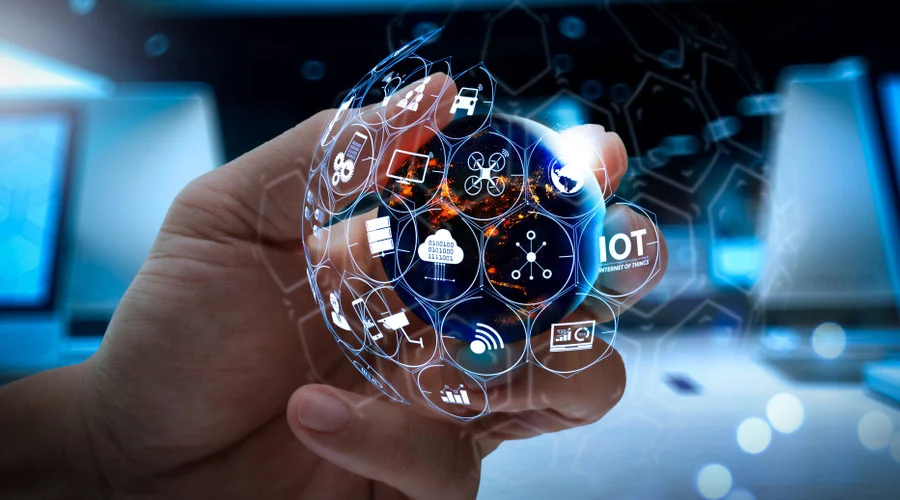
Emerging Technologies 2030
The need for an epidemic caused by COVID-19 has fueled the relentless technological advancement in recent months. In the coming years, rapid growth in the application of new technologies is expected to make life easier for professionals, students, seniors, companies, or public institutions. As the pace of technological advancement accelerates, life can change dramatically in less time than expected. Some of the technologies below will become commonplace in a few years, although some of us may not even know that technology exists.
In this regard, few companies has compiled some technologies with the longest path of development for the next few years to make our lives easier, even if a crisis like the one experienced this year arises. Take a look at the list here to get a glimpse into the future.
Emerging technologies 2030
1. Drinkable Ocean Water
Cleaning on an industrial scale could be very common by 2030. With the rapid development of solar energy, we may use the residual heat of photovoltaic cells to remove salt from seawater. According to experts, the growing freshwater deficit could be met using this technology. Large-scale concentrated solar power plants (CSP’s) will become very common worldwide and will also provide drinking water to areas where it is not currently available.
2. Cloud-Native Platform
The modern office-based enterprise is paving the way for hybrid and more remote arrangements. As a result, the data infrastructure has to adapt to the geographically divided nature of the present and future workplace. Adjustments make distributed infrastructure and services a necessity, best provided in the cloud. Therefore, it has to be highly valued in many digital operations and even in the latest trends in mobile app development.
Through cloud-local platforms, organizations can access flexible and scalable IT services at more affordable prices. According to Gartner’s predictions, 75% of distributed companies will outperform undivided competitors by 25% by 2023. Meanwhile, estimates also indicate that CNPs will support 95% of total digital initiatives by this year. Organizations can take advantage of cloud computing and its benefits to access flexible and scalable IT services at more affordable prices through cloud-based platforms.
3. Unseen Computers
As our gadgets get smaller and smaller, the time may come when the computers we use will become invisible. They will be included in our clothes, our fashion accessories, and even our contact lenses. These gadgets can use textile feedback or have a level of “environmental intelligence” that will allow them to adapt to specific external conditions.
4. Smart Work from Home Technologies
Before the epidemic, most people thought that organizations could not innovate in a fragmented work environment. If anything, 2021 disproved that belief as businesses looked for viable ways to adjust to sustainable and large-scale work-from-home solutions. After more than a year, successfully adapted companies have reached a high level of competitiveness in the post-epidemic market.
In the aftermath of this epidemic, technologies that work better and brighter from home have become indispensable for the ever-increasing rate of change. Employees need it, competitors can leave you behind without it, and customers can look elsewhere if you don’t provide such technologies. In addition, investors and analysts look for innovative, far-reaching policies to gauge business flexibility. Notable examples of such work from home solutions include Zoom, Trelo, Slack, Microsoft Teams, ClickUp, and ProofHub. Most tools have seen rapid growth recently, and subsequent years will be no different.
5. Anywhere Operations
Most people, workers, and customers alike wonder what has happened in the long run since the massive change in remote work. Instead of focusing on a return to work policies, visionary business leaders have joined forces with other business entities to develop a sustainable “anywhere operation” model for good measurement. The essential components of an operation model anywhere:
- Virtual collaboration
- People-centric and local independence
- Digital readiness
Each of these components comes under intense pressure during the crucial months of 2020. This suggests that the outcome solutions designed to address these challenges were more than just operational measures. This type of enterprise results in decentralized operations with better access to a broader talent pool and better business flexibility in the “Operations Anywhere” model.
7. Genetic Predictions
The infinite rise in computing power means better analysis of the individual genome and more accurate predictions of possible conditions such as breast cancer and heart disease. Regardless of the potential for genetic predisposition, DNA-based predictions can be the next big thing in general medicine. This technology could lead to better diagnosis and more personalized treatment for many genetic conditions. Given the complexity of the person genome, technology has barely crossed the line, and the upcoming years will see meaningful growth in this area.
8. Health prevention through food
Healthcare systems will adopt more health-related safeguards by 2030, based on the science behind the health benefits of a diet rich in plant nutrients. Biological systems will activate this trend through artificial intelligence technologies, which rapidly enhance our understanding of the role of specific nutrients in specific human health and their practical consequences. With a deep understanding of nutrition, the global food industry can offer various product options to support the best health outcomes.
9. Artificial Intelligence
It is not feasible to continue managing world production with paper and pencil. It only leads to shortcomings and unnecessary waste of material and time. Businesses are increasingly adopting cloud-based technologies, mainly due to the COVID-19 epidemic. As a result, they can intelligently assemble, modify, and present the product with context and process data from manufacturing lines. By 2030, this ubiquitous flow of data and the intelligent algorithms that integrate it will continuously improve manufacturing lines, especially at the highest levels of production and product quality. This can reduce the total waste in manufacturing by up to 50%. As a result, we will be capable of enjoying high-quality products that are fast and low cost for our pocket and environment.
10. Edge Computing
Although a significant portion of the data processed between connected devices is currently in the cloud, continuous data transfer can mean more time. Sometimes, a few seconds in computing can have a significant impact on system performance. Although 5G offers a temporary solution, a much simpler response can enable connected objects in the network to process data. This is identified as edge computing or intelligent edge. The data processing approach can address a wide range of challenges in transportation, manufacturing, healthcare, and any other industry where split seconds are critical to the success of various operations. As computing and attachment speeds increase, intelligent devices will gain more popularity in the years to come.
10. Cyber Security Mesh
The increasing incidence of cyber-attacks shows many flaws and pitfalls in the current standards of cyber security. The situation is even worse as more and more people work and use their devices to access its infrastructure. Cybersecurity Mesh offers a comprehensive way to eliminate security vulnerabilities and vulnerabilities associated with users and devices located outside the network walls. Cybersecurity Mesh adopts a new approach to digital security that enables businesses to develop specific security measures to identify a device rather than the proximity of secure connections. It uses a divided framework as argued to define a circle according to network access. It seems to offer a solution to the limitations of traditional security measures when faced with a large number of the remote workforce. Therefore, in the upcoming months and years, it will present a more expansive form of cybersecurity.
Conclusion
Given the prevailing pace of change and discovery, keeping abreast of the latest and greatest technology trends is essential. Businesses, both large and small, must embrace the emerging changes in the world’s technological landscape. Then you must innovate if you want to overcome the ever-evolving challenges facing industries, consumers, and businesses, taking advantage of the relevant tools and platforms at your disposal. Overall, these are exciting times, and expectations for the coming months hold stakeholders in various fields.
